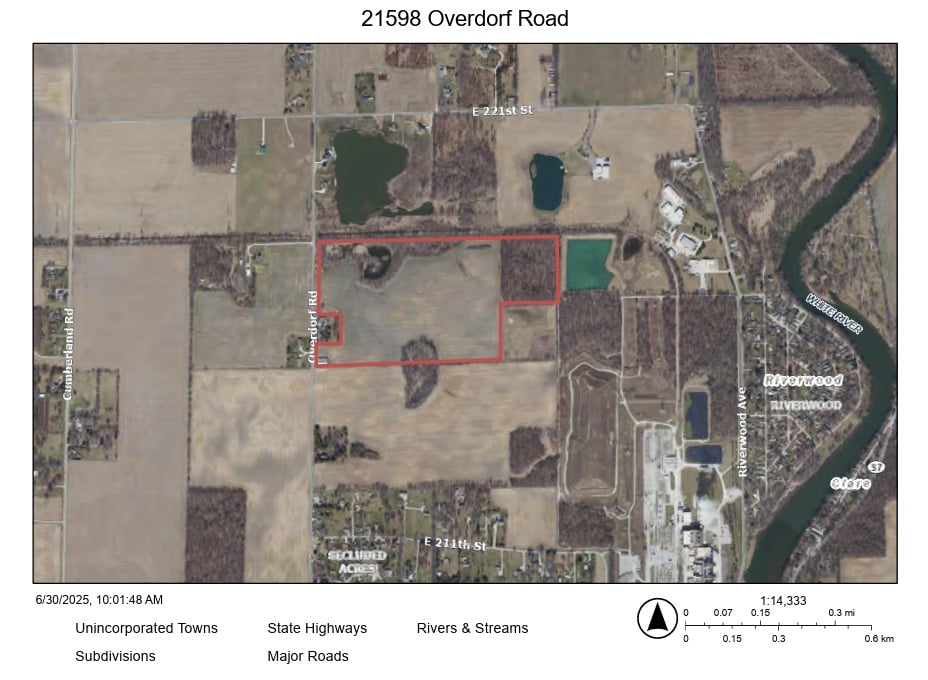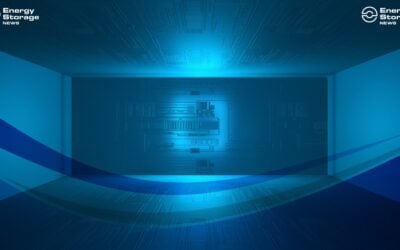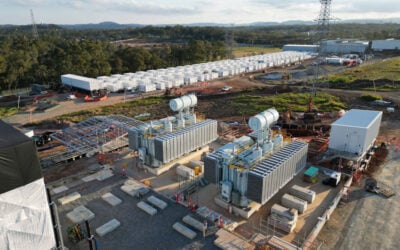
Officials at the Zoning Board of Appeals (ZBA) for Hamilton County, Indiana, have rejected an application for a lithium iron phosphate (LFP) BESS from developer Aypa Power.
To commence construction and allow the BESS to operate, Aypa Power filed a land use variance application with the ZBA, which was discussed and voted on during a 23 July meeting.
Developer aims to begin construction in late 2027
Prior to voting on Aypa Power’s application, Brandon Gahman, the company’s senior development manager, gave a presentation to the ZBA and a meeting room full of local residents.
“We’ve put together quite a full application—437 pages—and I appreciate the time you spent reviewing that. I know it’s quite a lot of information, but for an investment this large, we want to be as thorough as possible,” said Gahman before going into project specifics.
Try Premium for just $1
- Full premium access for the first month at only $1
- Converts to an annual rate after 30 days unless cancelled
- Cancel anytime during the trial period
Premium Benefits
- Expert industry analysis and interviews
- Digital access to PV Tech Power journal
- Exclusive event discounts
Or get the full Premium subscription right away
Or continue reading this article for free
Dubbed Kingfisher Reserve BESS, the 200MW/800MWh project is proposed for a site located approximately 3.9 miles northeast of Noblesville in Hamilton County, occupying 9 acres of a total 70-acre site.
“With the balance of the land, we will not be developing it with anything else – we hope to find a tenant farmer,” explained Gahman.
In terms of a timeline, Aypa Power commenced project development in 2022, where it filed an interconnection request with the Midcontinent Independent System Operator (MISO) and also secured a real estate agreement.
From there, the developer started its environmental, engineering, and due diligence in 2024 and commenced BESS safety training with Hamilton County Emergency Management and Fire Departments this year.
All being well, Gahman explained that Aypa Power was targeting a 9–12-month construction period commencing sometime towards the end of 2027.
BESS fire safety a focus of presentation
With the potential of BESS fires continuing to be a hot topic of discussion during the local permitting process across the US, Gahman made this a focus of his presentation.
Energy-Storage.news has reported on several local permitting processes taking place across North America this year, including ones administered by the Town of Oakham in Massachusetts and the Canadian Capital City of Ottawa, where BESS fire safety has taken centre stage.
In particular, Gahman highlighted standards NFPA 855 and UL 9540A, which he explained were mandatory fire safety standards in the BESS industry and that “compliance is required by the Indiana Department of Homeland Security (IDHS) to whom we must obtain multiple permits.”
As part of the IDHS administered permits, Aypa Power’s project will be subjected to a further fire safety review along with an on-site BESS safety training course.
“This is a multiple day training [course] that is paid for by us and would involve [the creation] of a very specific site plan and emergency response plan in collaboration with County first responders,” explained Gahman.
Although Aypa Power’s application doesn’t list a BESS supplier specifically, technical drawings of the project are based upon usage of Canadian Solar subsidiary e-STORAGE’s SolarBank 3.0.
The two have a history of working together and as reported by Energy-Storage.news earlier this year, Aypa Power secured a deal for e-Storage to deploy its SolarBank BESS units at two of its sites elsewhere in the US.
Moss Landing: ‘Blueprint for how not to build a battery storage project’
As acknowledged by Gahman during his presentation, the most high-profile fire incident to occur at a battery storage facility was at Vistra’s Moss Landing facility in Monterey County, California.
With residents of Hamilton County fearing a repeat of this sort of incident, Gahman dedicated a whole portion of his presentation comparing Moss Landing to Aypa Power’s Kingfisher proposal.
“[Moss Landing] was a blueprint for exactly how you do not want to construct a battery energy storage system,” he explained.
Although an investigation into the cause of the fire is still ongoing, Gahman explained how Vistra’s facility was “indoors with a wide array of racks and modules under one roof … with nothing in between them to stop any [fire] propagation.”
Vistra’s Moss Landing facility also utilised lithium nickel manganese cobalt battery technology which Gahman described as “more volatile” than other chemistries such as LFP.
The cleanup at Moss Landing is still ongoing, with the US Environmental Protection Agency (EPA) and Vistra coming to an agreement last month for the developer to remove debris from the site.
MISO capacity shortfalls
As recently reported by Energy-Storage.news, a recent report from American Clean Power Association (ACP) and Aurora Energy Research found that MISO will need a 500% rise in BESS deployment by 2035 to address shortfalls.
Gahman highlighted this during the recent meeting by bringing up MISO’s most recent Regional Resource Assessment (RRA), which predicts a 6GW capacity shortfall for the system operator’s Local Resource Zone 6 (LRZ6), which covers Indiana and parts of Kentucky.
This capacity shortfall is being partially driven by the gradual shutdown of MISO’s fleet of fossil fuel plants, including Duke Energy Indiana’s Noblesville gas plant, which is located adjacent to the proposed site for Aypa Power’s Kingfisher BESS and is set to be retired before 2035.
Although the shutdown of these polluting facilities is fantastic for net-zero ambitions, MISO currently doesn’t have the capacity to cover the shortfalls left by these plants, which is why proposals such as Aypa Power’s Kingfisher BESS could be vital.
Despite these facts, after hearing from over 30 residents speaking out against the project, the ZBA voted unanimously to reject Aypa Power’s application.
Aypa Power has been contacted for comment on the situation.
The project’s docket filed with the Hamilton County Zoning Board of Appeals can be found here (PDF).





